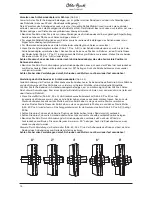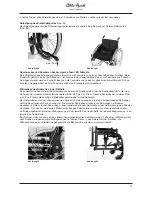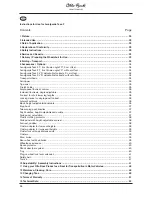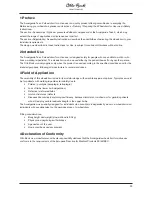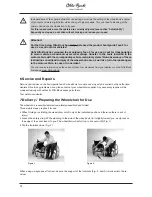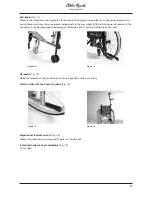
30
31
5 Safety Instructions
To avoid potentially dangerous situations such as tipping, you should become familiar with your
new wheelchair on level ground first. If possible, make use of the experience made by other active
wheelchair users.
Do not use the footplate as a step when getting into or out of your wheelchair. This component is
designed to flip up and swing away.
Get to know how the wheelchair reacts when the center of gravity shifts; for example on slopes or
inclines or when clearing obstacles, like steps and curbs. This should be done only with assistance
from another person. Using the anti-tipper is strongly recommended for untrained wheelchair users
and children, and also in the case of extreme rear wheel adjustments.
The anti-tipper is a component that has been designed to prevent the wheelchair from tipping over
backwards. The anti-tipper should never be used to support the back of the wheelchair with the rear
wheels removed.
The wheelchair might tip on even ground if extreme adjustments have taken place (e.g. rear wheels
have been attached in their more forward position), and if the body has not been appropriately posi-
tioned.
On upward slopes lean your upper body far forward.
When reaching for objects in front, to the side or behind the wheelchair, make sure you do not lean
out of the wheelchair too far since the shift in the center of gravity might cause the chair to tilt or tip
over.
Use your wheelchair properly. For instance, do not "jump" the chair down from higher surfaces and
do not drive against obstacles (including steps, curbs) without braking.
Stairs should be ascended/descended only with assistance from attendants. If ramps or elevators
are available, they should be used. If such devices are missing two helpers must carry the wheel-
chair over the obstacle. If only one helper is available, this person should adjust the anti-tipper (if
mounted) in such a way that the anti-tipper does not contact the steps during transport. This will
help avoid a potential fall. Afterwards, the anti-tipper should be swung back to its operational posi-
tion.
Be sure the attendant lifts your wheelchair only by components which are firmly attached (for ex-
ample not at the footrest or the flip-up side panels).
If your wheelchair is equipped with height adjustable push handles, make sure that the clamping
levers are firmly tightened.

